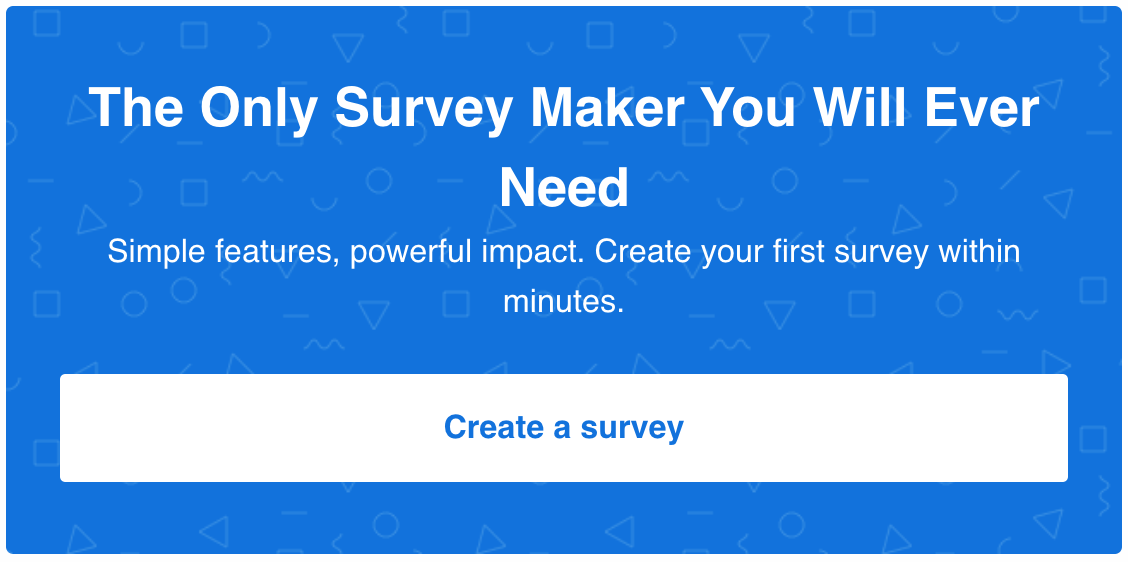You’re about to conduct important research for your studies, work, or simply to satisfy your own curiosity.
You’ve created a well-thought-out survey with a ton of relevant questions.
The next step is to send out the surveys, gather the responses, analyze them, and… but wait.
Who are you going to send the surveys to?
Ok, you probably have a particular target audience in mind but should you simply send the surveys out to every single member of your target audience or can you simplify the entire process by choosing a particular sample of that audience.
In market research, this is a question of population vs sample.
In this post, we’ll try to resolve that dilemma, but first, let’s briefly define each.
What does population mean in market research?
In everyday life, we mostly use the term “population” to refer either to the entire human population or to the total number of people who live in a certain area.
In research and statistics, however, word population can mean many things. For starters, it doesn’t have to refer to humans only. So, while we know we can refer to the population of the United States, we can also analyze the cat population of San Francisco, for example.
In fact, the term “population” in statistics goes beyond animate creatures. We could be talking about a population of objects, events, cases, procedures, observations, or more. For example, the number of flower shops on Long Island, the number of visits to the doctor, or the amount of sugar in homemade jam can all be examples of a statistical population.


To define it a bit closer, a population in research is any set of data that has certain common characteristics or a standard parameter that determines it.
Strictly speaking about research, population size refers to the aggregate number of people in the set you’re looking to study. Let’s say you were doing research based on a random sample of people all over the US. In this case, your population size would be somewhere around 329 million (the total population of the US at the time of writing the article).
Similarly, if you’re conducting intra-company research, your population would be the total number of employees at your company.
And even though a researcher is expected to clearly define the population they’re dealing with, it’s often pretty difficult to do so. For example, if you’re doing a study on “How many hours do Americans aged 30-49 sleep every night on average?”, the population mentioned in the title seems very precisely defined, doesn’t it?
But who really are “the Americans” here? Not all the Americas live in the US and not all the people living in the US consider themselves Americans. And so on.
This is an issue that could be solved by determining a more precisely defined sample of a population.
Even though this partly answers the “population vs sample” dilemma, I’ll provide more reasons why you should choose a sample over a population for your surveys after we share a word or two about what a sample actually represents in research.
What is a sample in market research?
In research, a sample is a smaller part or subset of an entire population.
You can think of a sample as a representative of a certain population in a particular study.
When conducting a survey about the eating habits of US citizens, for example, it would be impossible to question all the 327 million people, wouldn’t it? What you can do instead is to question a sample of that population.


That being said, the sample would consist of all the members of the population who are asked to take part in the survey. By studying this sample (provided that the sampling was done right so as to avoid many types of bias in research), you can come to conclusions about the behavior or characteristics of the entire population.
You can create samples of data using various research methods including the two main types of sampling – probability (random) and non-probability sampling. They can further be subclassified into a total of 8 sampling types listed below.
- Probability (random) sampling – simple random sampling, stratified sampling, cluster sampling, systematic random sampling
- Non-probability sampling – convenience sampling, purposive sampling, quota sampling, referral/snowball sampling
We have prepared a detailed guide on different types of sampling (including a free sample size calculator) if you want to learn more about how you can create a sample out of population for your surveys.
To make it a bit more clear, here’s an example.
Sampling example
A wooden tables manufacturer wants to know all the furniture stores where they can sell their kitchen tables. They have population data on the total number of furniture stores in Downtown Phoenix.
Our wooden tables manufacturer is now able to create a research sample by including only those furniture stores that sell wooden kitchen tables. After gathering the necessary data, they can study the data characteristics, display the results in the form of stats and reports that are later analyzed to get meaningful business insights.
Later on, using the data and insights gathered from the sample, this company can find new ways to grow their business into the entire population of furniture stores.
Population vs sample: 5 reasons to go with the latter
1. It’s impossible to collect data from an entire population
In the majority of cases, it’s very impractical and practically impossible to collect accurate data from an entire population. No matter how small the population, it’s always too large for this kind of endeavor.
On the other hand, if sampled correctly, samples represent the entire population. But without large and cumbersome volumes of data. Most skilled researchers are able to use sample data to gain insights into the behaviors and characteristics of the total population.


2. It’s faster
Often, the amount of time available to do research is a factor that limits you in many ways. That’s one of the reasons why, for example, online surveys have replaced the print ones – it’s much easier and less time-consuming to create, distribute and analyze them.
When it comes to the population vs sample dilemma, even if it were possible, it would take an enormous amount of time to collect data from the entire population. Surveying a smaller sample can save a ton of time and provide researchers with urgent data.
3. It’s cheaper
Let’s face it – most researchers are forced to work with very limited funds. The cost of research is often a limiting factor. That’s why researchers need to figure out the most cost-effective way to manage with the limited resources available to them.
Doing a survey on a smaller, carefully-determined sample of population is both time and cost-effective, given the fact that it requires fewer resources in terms of people, computers, servers, emails, and other data collection resources.
4. It can be equally or even more accurate
It is a common misconception that data gathered through samples cannot be completely accurate and doesn’t adequately represent the characteristics and behaviors of the entire population.
In fact, research conducted on a sample can even be more accurate. How come? Well, if you use one of the non-probability sampling methods described above to determine the sample, it will be an accurate representation of the entire population.
And if you do it carefully enough to avoid bias in research (non-response bias being the greatest threat to the validity of research if done on a large population), the data obtained will be even more accurate than if you had surveyed the entire population.
5. It’s easier to manage and analyze
As already stated above, in most cases, gathering an entire population of data is practically unachievable. Many populations are extremely challenging and difficult to come by. And even if you manage to do so somehow, managing, organizing, and analyzing large volumes of data can be a nightmare.
With a sample, on the other hand, you can easily manage everything from a single dashboard, in a single app, on a single computer, on a single server.
Here you can see the LeadQuizzes’ reporting feature, which allows you to easily manage and analyze insights and responses from your survey sample data:


Now that you don’t have to worry about the population vs sample dilemma anymore, you should be ready to send out your first survey.
Ready to conduct research on your sample?
All it takes is a single login.
LeadQuizzes offers 75+ online quiz and survey templates to all of our users. These are professionally created and primarily aimed at marketers and other researchers looking to obtain sample data for various populations.
You can choose from a variety of customer satisfaction, product feedback, employee engagement and 20+ other types of marketing surveys that enable you to easily collect, organize, manage, and analyze your sample data.
